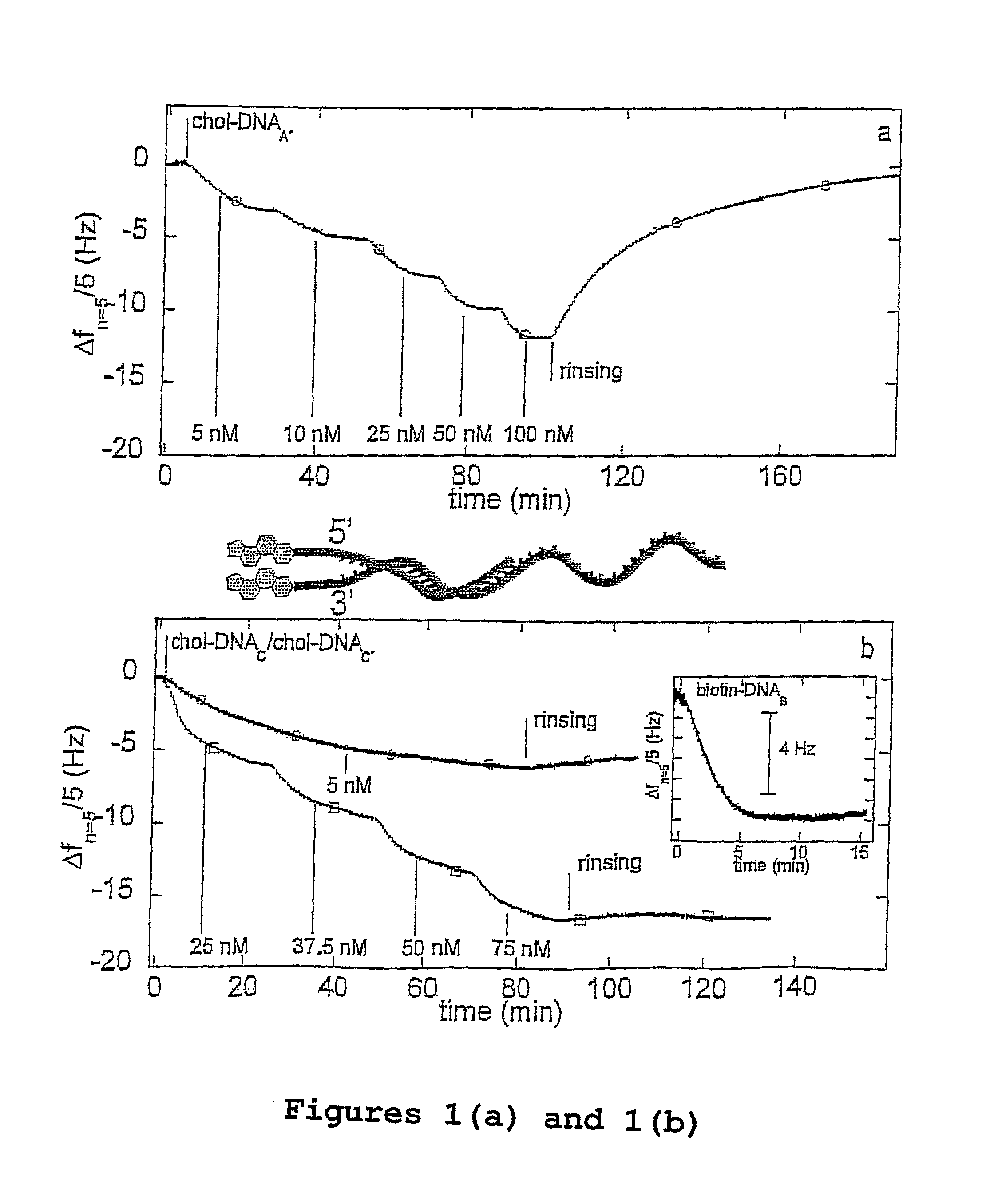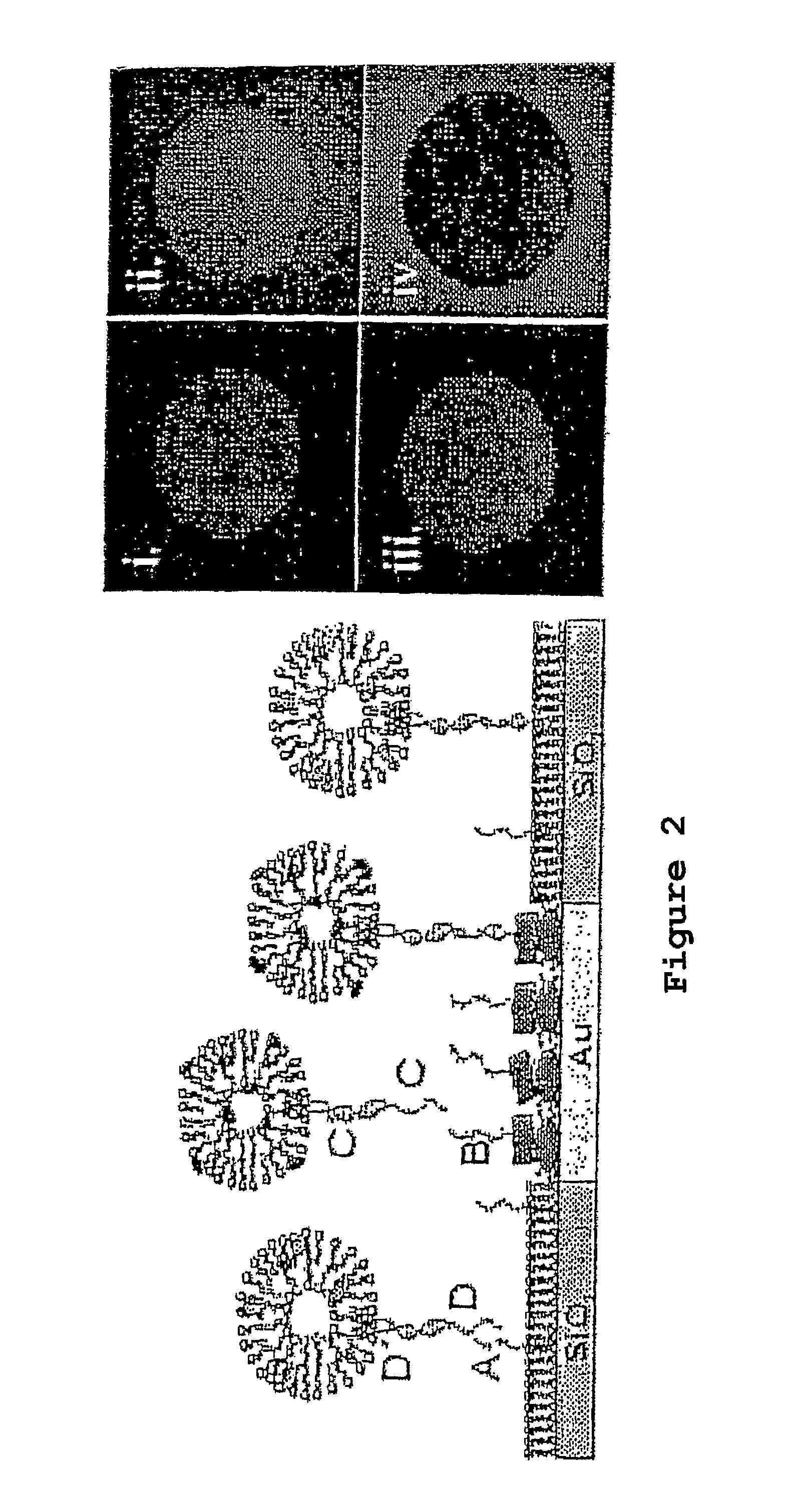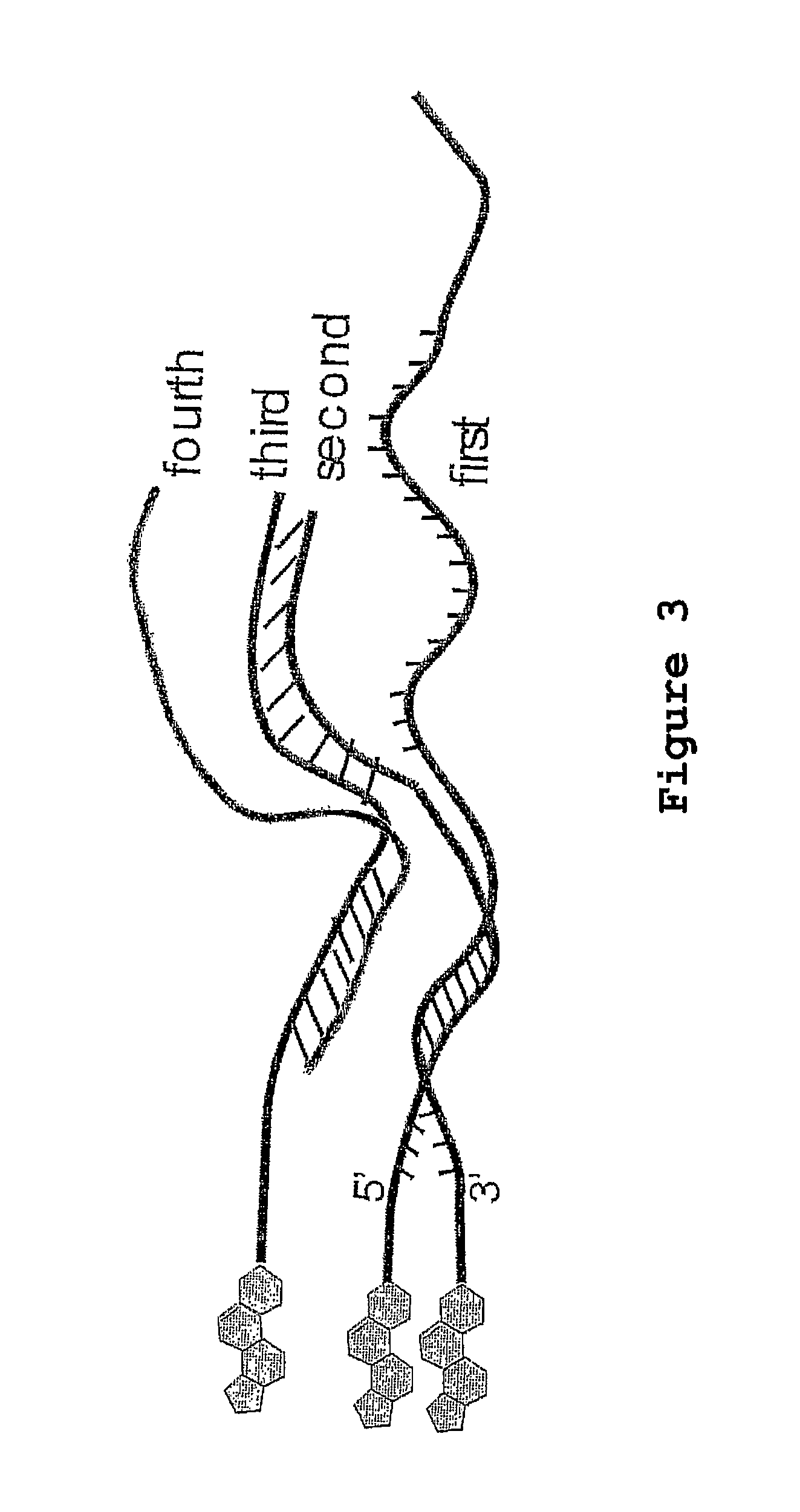Oligonucleotides related to lipid membrane attachments
a technology of lipid membrane attachment and oligonucleotide, which is applied in the field of oligonucleotides related to lipid membrane attachment, can solve the problems of complicating the quantitative control of the number of dna per vesicle, and the difficulty of analysing a large number of proteins on this forma
- Summary
- Abstract
- Description
- Claims
- Application Information
AI Technical Summary
Benefits of technology
Problems solved by technology
Method used
Image
Examples
Embodiment Construction
[0004]To facilitate an understanding of the present invention, a number of terms are defined below.
[0005]As used herein, the term “vesicle” or “liposome” refers typically to spherical structures (5 nm to 20 μm in diameter) built up by lipid membranes, which may or may not contain proteins, glycolipids, steroids or other membrane-associated components. The terms “liposome” and “vesicle” are used interchangeable herein. Vesicles can be naturally (eg the vesicles present in the cytoplasm of cells that transport molecules and partition specific cellular functions) or synthetically (eg liposomes) generated. The term “vesicle” is here also used for “micelles” which are particles comprising of lipids, which particles have a hydrophilic exterior and a hydrophobic interior.
[0006]As used herein, the term “nucleotide” refers to any nucleic acid, such as DNA and RNA, as well nucleic acid analogues such as, but not limited to, PNA (Peptide Nucleic Acid), LNA (Locked Nucleic Acid) and Morpholino ...
PUM
| Property | Measurement | Unit |
|---|---|---|
| diameter | aaaaa | aaaaa |
| pH | aaaaa | aaaaa |
| oligonucleotide structure | aaaaa | aaaaa |
Abstract
Description
Claims
Application Information
 Login to View More
Login to View More - R&D
- Intellectual Property
- Life Sciences
- Materials
- Tech Scout
- Unparalleled Data Quality
- Higher Quality Content
- 60% Fewer Hallucinations
Browse by: Latest US Patents, China's latest patents, Technical Efficacy Thesaurus, Application Domain, Technology Topic, Popular Technical Reports.
© 2025 PatSnap. All rights reserved.Legal|Privacy policy|Modern Slavery Act Transparency Statement|Sitemap|About US| Contact US: help@patsnap.com



